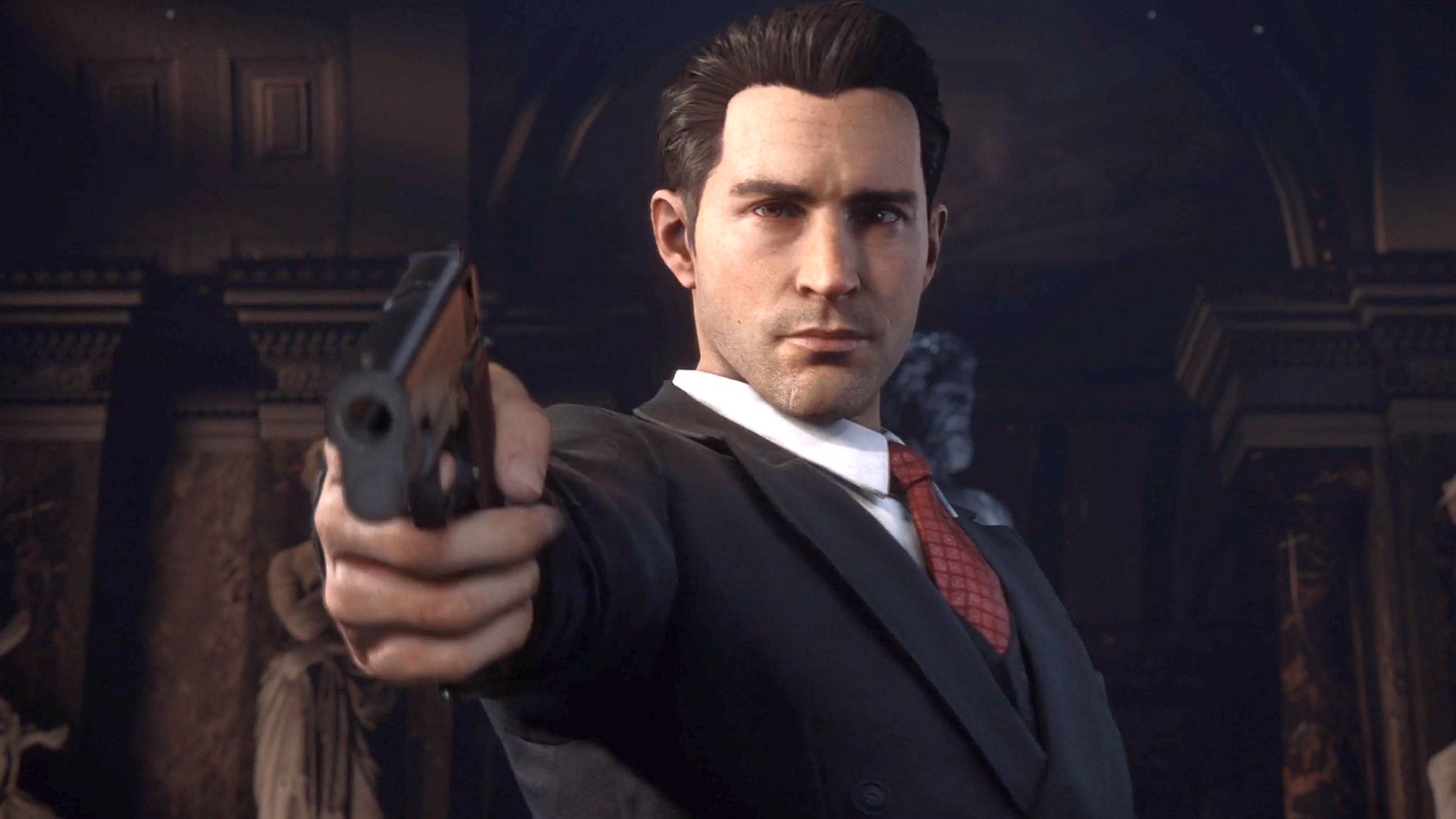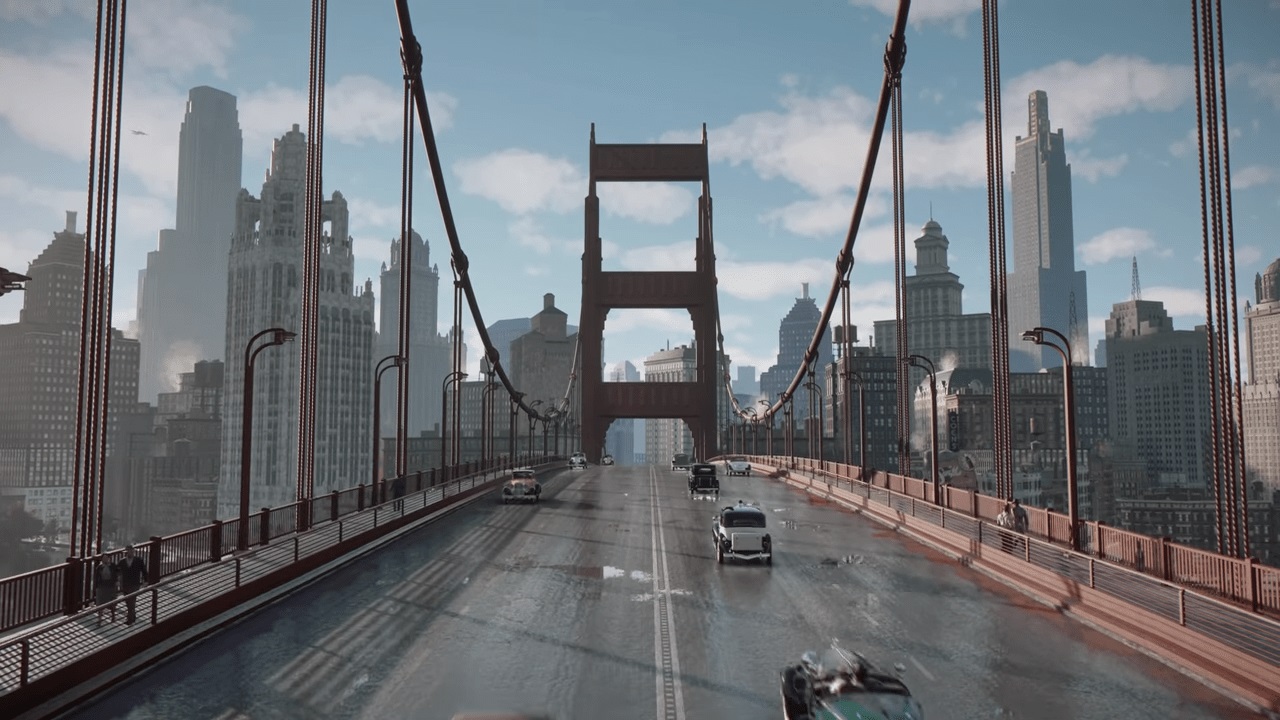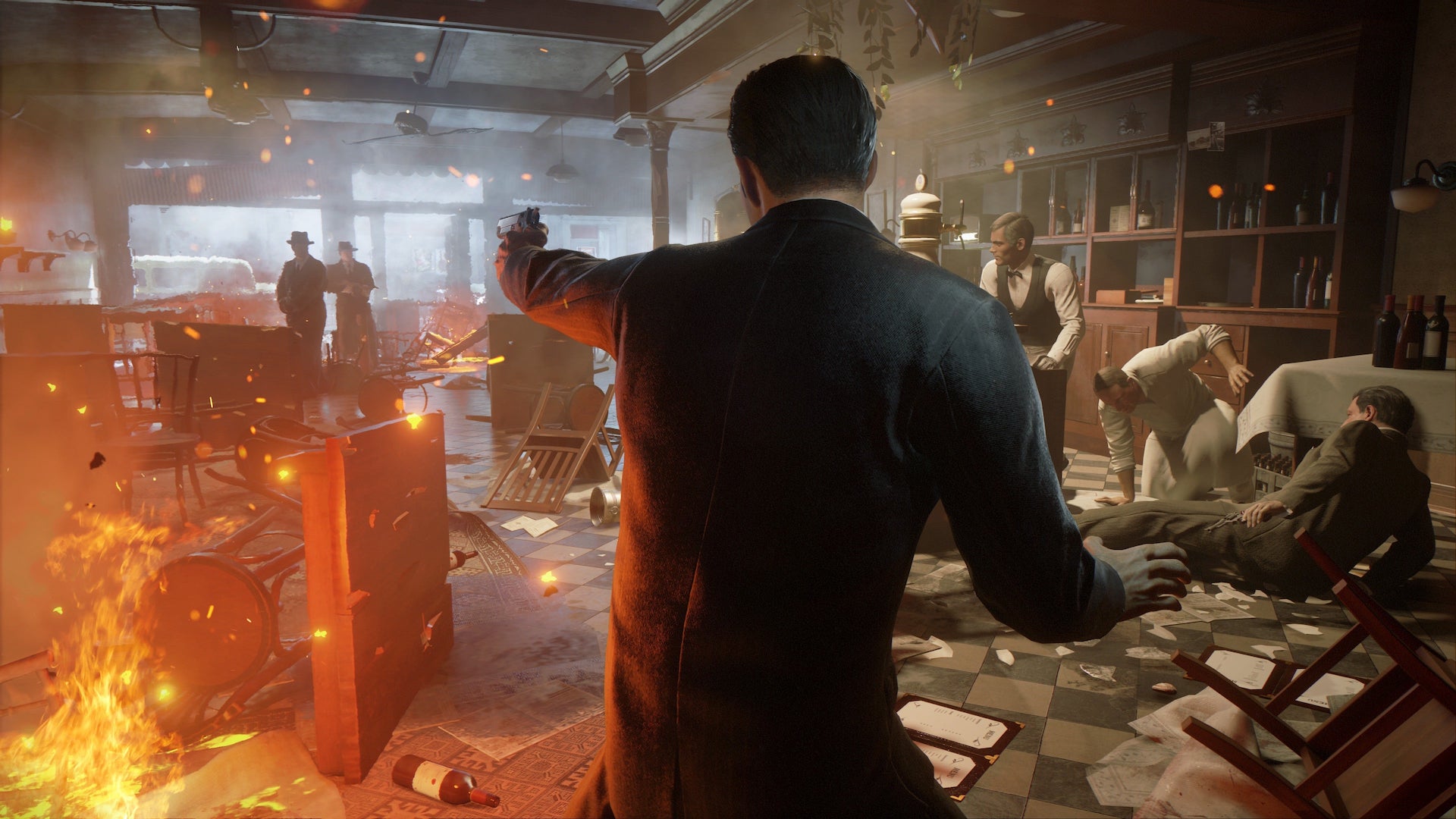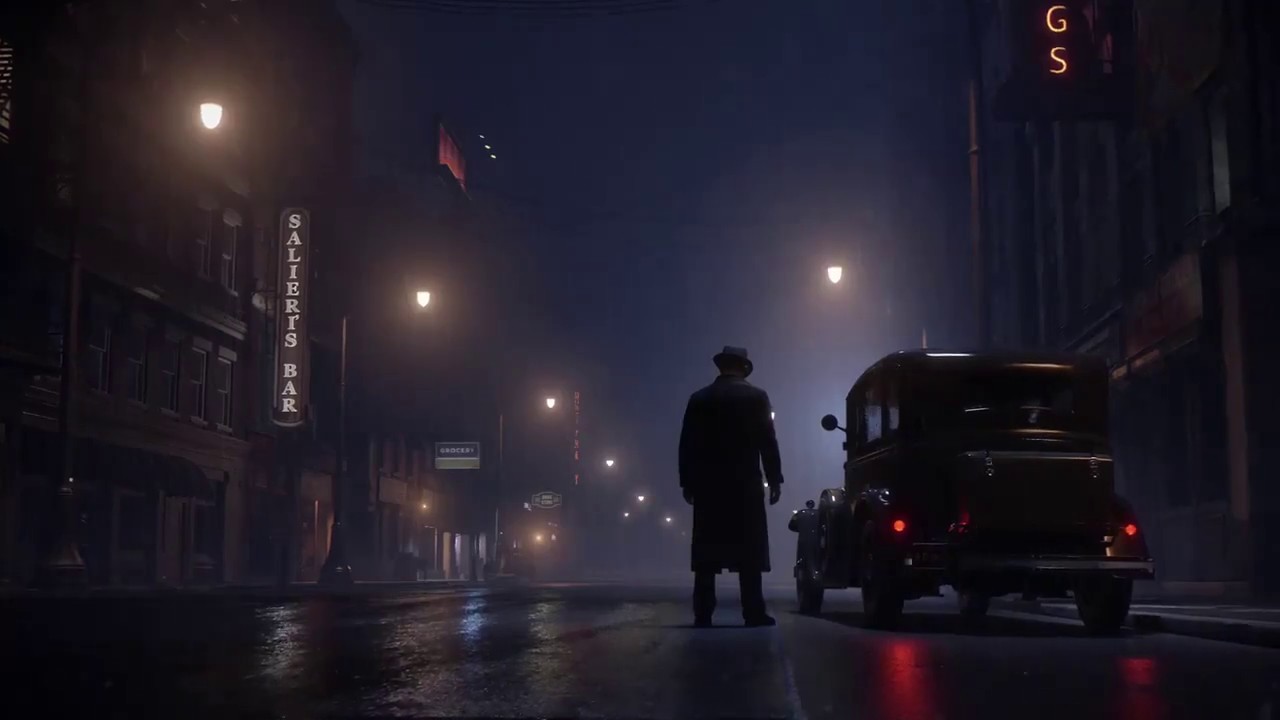
The Mafia 1 remake is out now. Initial trailers and gameplay videos showed us that we weren’t at a simple remaster or brush up of the 2002 original. Instead, Hanger has gone for a complete, ground-up remake of the game, based on the Mafia 3 engine, with an updated feature set. Mafia: Definitive Edition looks to be one of the most transformative remasters we’ve seen this generation. Mafia: Definitive Edition may have its roots in the early sixth generation, but technologically speaking, we’re looking at a game that very much holds its own against its eighth-gen peers. Let’s take a deep dive into the game’s core tech and find out.
Engine Overview
Mafia: Definitive Edition is built on Hanger 13’s Mafia 3 engine, as mentioned before. We’re looking at a shot-for-shot remake of the original game, meaning that original 2002 assets are nowhere to be found. The Mafia 3 engine utilizes a deferred renderer, allowing for a large number of dynamic light sources at a given time. Dynamic lighting is used to great effect here, with neon signs, car headlights and street lamps all adding considerably to the game’s atmosphere. Mafia: Definitive Edition uses a physically based material rendering pipeline, a step forward from Hanger 13’s work in Mafia 3. We’re at the tail end of the eighth-generation and at this point, art teams are well-versed with PBR workflows, meaning that superlative material rendering quality is almost something of a norm.
Materials in Mafia: Definitive Edition are noticeably better than in Mafia 3, with PBR used consistently across all textures in the environment. Metallic surfaces on cars are the real highlight, here. Back in 2002, the original Mafia delivered great car models for the era, a step up from GTA 3 and nearly on par with racers of the time.
We’re looking at a similar situation here, albeit two generations down the line. Hanger 13’s invested a considerable amount of the onscreen polygon budget on exquisitely crafted 1930s vehicles. You’ll want to move the camera around and get a close up look.
Character model comparison
Nowhere is the two-generation gap between Mafia: Definitive Edition and 2002’s original more evident than in terms of character rendering. Polygon counts have increased exponentially over the past two decades, with more capable console GPUs able to render substantially more complex character models with minimal overhead. Characters in the 2003 original were built out of roughly 1,500 to 2,000 polygons, in line with other open world sixth-gen titles like Grand Theft Auto: San Andreas. At these poly counts, complex character expressions, hair, and facial features are difficult to capture effectively. While the original Mafia was considered a “cinematic experience” back in the day, the simplistic models make for difficult viewing in 2020. Mafia: Definitive Edition ramps polygon counts up by 20 times or more. Main character assets are rendered with 40,000 or more polygons, enough room to accurately convey detail and emotion, even in close-up shots. Character faces hold up against the best of the eighth-gen.
Character texture quality sees a major boost in fidelity, too. We would have expected higher quality texture assets even if Hanger 13 didn’t go for an all-in remake. We’re looking at a roughly 200x increase in memory allocation between the PlayStation 2 and PlayStation 4. Character texture detail is great, with 2K and 4K texture assets used both for faces and skin, as well as on clothing. Physically based rendering comes into play here: suits and other cloth material assets are a good match for their real-life counterparts.
World Comparison
2003’s Mafia was criticized for being a linear shooter in the guise of an open world GTA-esque romp. Whether or not the city of Lost Heaven was used extensively for side quests and other activities, it remains one of the most interesting open world environments to explore on sixth-generation hardware: the density of buildings, pedestrians, and flourishes of individuality, together an emphasis on period accuracy made for an incredible experience for the time. Nearly two decades later, Hanger 13 is apparently looking to recreate that same sense of awe here in the Mafia: Definitive Edition’s open world environment.
Hanger 13 has massively increased the level of detail, as well as the number of unique, incidental assets, right across the board. The short draw distance of the original game — something that drew criticism from reviewers of the time — is a thing of the past here.
What impressed us most, though, was the level of incidental detail in alleyways, side streets, and interiors. There are plenty of eighth-generation games out there right now that boast a lower level of incidental detail. Volumetric lighting and fog have carried over from Mafia 3 and add much to Mafia: Definitive Edition’s visual makeup, especially in night-time scenes. Night-time lighting from signs and cars, together with the game’s screen-space reflections result in dense atmospherics.
Apart from SSR, Mafia: Definitive Edition appears to use a high quality depth-of-field effect in cutscenes. This is, again, par for course as far as the eighth-gen is concerned. However, it’s a step up from the original and an interesting move relative to Mafia 3, considering so many of the key story beats in that game were told via pre-rendered cinematics.
Gameplay comparison
Lifting gameplay wholesale from previous generation titles is often not a great idea. Thankfully Hanger 13 draws on the collective experience of nearly two decades of third-person gameplay design since 2002. Mafia: Definitive Edition doesn’t just look like an eighth-generation title. It plays like one, too.
In big part, this is down to a complete reworking of gunplay. The original Mafia had little in the way of a cover system. This wasn’t too bad for PC gamers — pin-point mouse accuracy made shooting encounters passable on the platform. However, the lack of cover mechanics made it tough for PlayStation 2 and Xbox owners to get through gunplay segments, especially at a lower framerate. Mafia: Definitive Edition offers the kind of cover mechanics you’d expect in a modern third-person shooter, with easy one-button transitions into and out of cover. Together with the retooled ballistics and character physics, combat segments are far more visceral and compelling than in the original. Driving plays a big role in Mafia games. Period-accurate car handling was a divisive addition to both the original Mafia and Mafia 2. While we can’t speak to the actual driving experience, it appears as if Hanger 13 has upgraded car handling mechanics and physics. We don’t expect the game’s 1930’s vehicles to zoom to 100 kmph. However, better handling and a solid driving model should lead to a much-improved experience over the original.
Future additions
Considering Mafia: Definitive Edition’s release date, we wouldn’t be doing the game justice without talking about future possibilities on the PlayStation 5 and Xbox Series X. Hanger 13 has yet to officially confirm anything about ninth-gen development efforts for the Mafia franchise. However, with the PlayStation 5 and Xbox Series X just months away, we will almost certainly see ninth-gen enhancements make their way over to Mafia: Definitive Edition.
There are two obvious improvements we see here: frame rate and ray-tracing effects. Considering the game’s visual complexity, we expect Mafia: Definitive Edition to run at 30 FPS on the eighth-gen consoles, a match for Mafia 3. However, the enhanced capabilities of the PlayStation 5 and Xbox Series X mean that a 4K 60 FPS mode is likely viable, though with possible cutbacks to effects or with dynamic resolution scaling.
The second area of opportunity is in terms of ray-traced reflections. Mafia: Definitive Edition makes extensive use of SSR, which reflects puddles, cars, and other surfaces. The dense urban environment would be a great fit for ray-traced reflections. Ray-traced reflections would mean a great visual improvement to the game’s already stellar cars.
Conclusion
Mafia: Definitive Edition is a strange thing: it’s a remake of sixth generation game, releasing on eighth-generation consoles, right at the dawn of the ninth-gen. From what we’ve seen, Hanger 13’s done an incredible job of remaking the entire Mafia experience from scratch for eighth-gen machines, building on the credible tech they first showcased in Mafia 3. The question now, though, is how well will Mafia: Definitive Edition scale on 2021’s new platforms? And where does the franchise go from here?



















